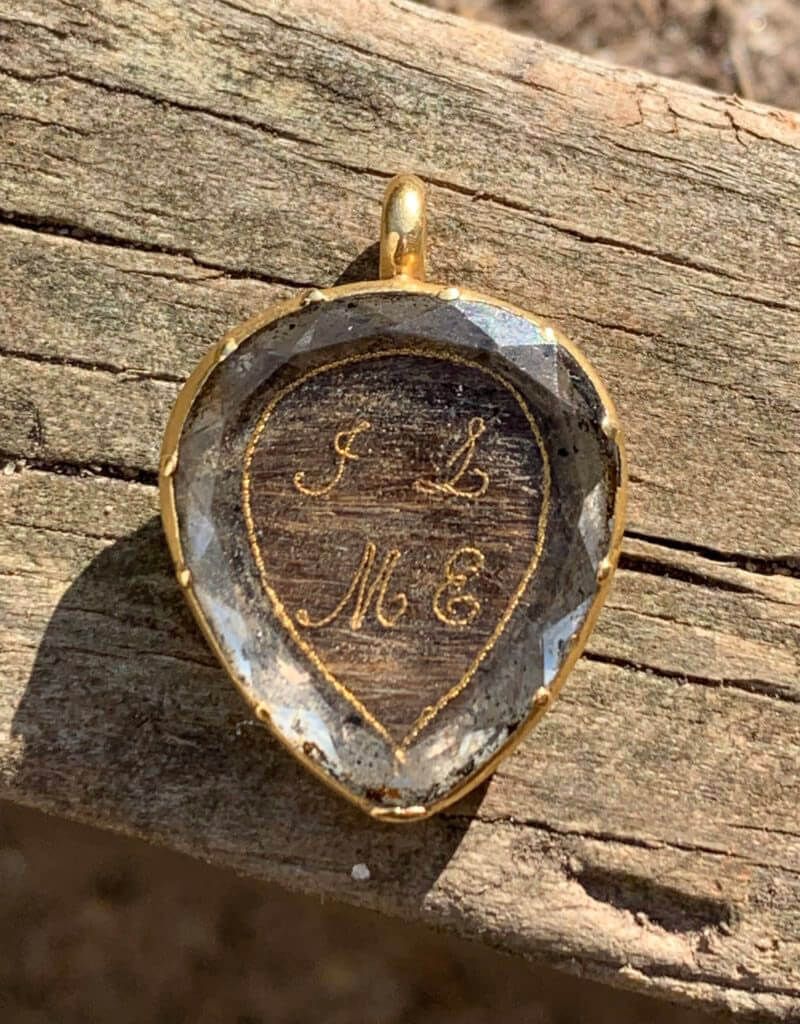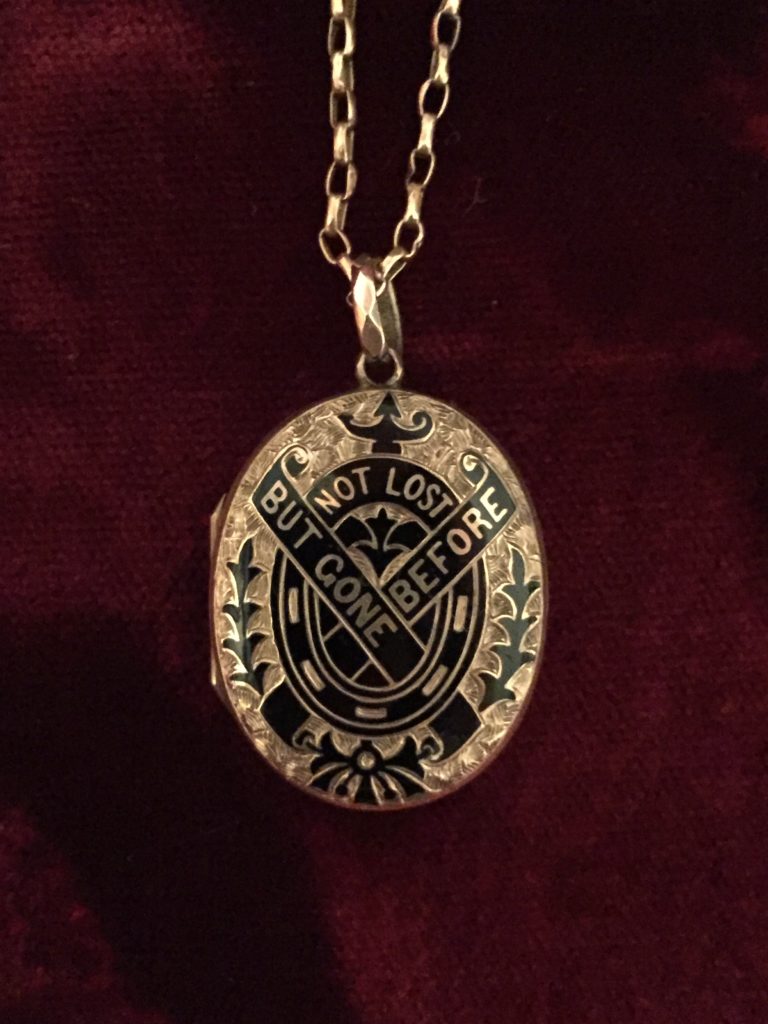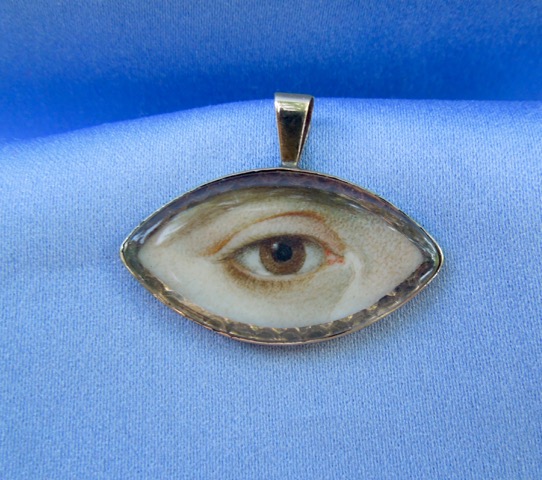A Sepia Pendant of a Lady Writing
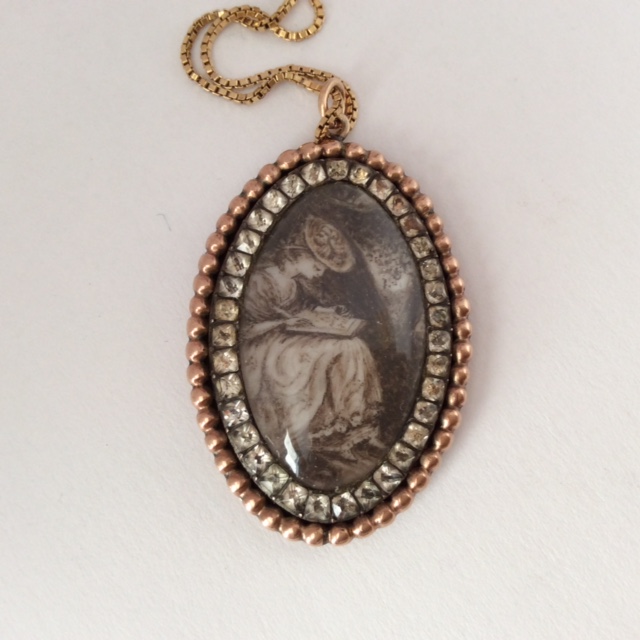
Visual representation of the female in 18th century sentimental is a literal one. Of the major symbols that replaced the memento mori style of the pre-1760s, the female became the one symbol to become the primary focus of the jewel. Archaeological excavation was an important element to the growth of classical culture in the 18th century. Digs in Pompeii and Herculaneum had discoveries in 1711, but resumed with major excavations in 1738, igniting the passion and interest in artists, thinkers and antiquarians. What stemmed from this was a change in how life and death were represented in jewellery. A major humanist movement in the Enlightenment followed the Neoclassical era, which allowed for questioning of traditional concepts of life and social structure. Since the Reformation and its impact upon religious thought, society was changing to look at itself in an individual way. Guilds, education and disseminated thought allowed for people to learn new concepts that were prohibited from earlier generations. New skills and crafts meant that an individual could break away from the family unit and learn something that was outside of the family craft. By the Neoclassical period of the late 18th century, industrialisation allowed for middle classes to grow new wealth, something the merchant classes had previously began to appreciate through importing and exporting goods globally. Hair weaving was one of the earliest modern professional female practices, with women being employed in the late 17th century to weave hair into a jewel. With these factors in mind, the female as a representation of the human experience became the focus of a jewel’s symbol, then the focus of unified sentimentality.
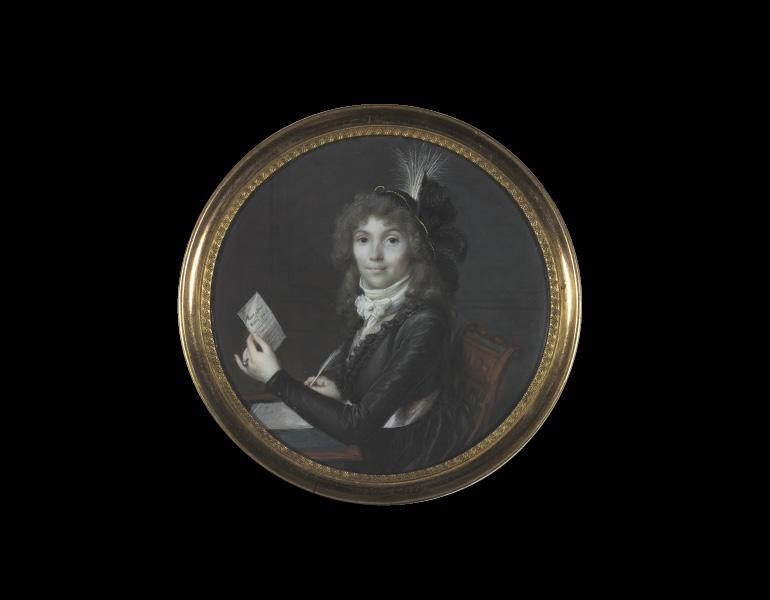
As in Frédéric Dubois’ Portrait of a Lady Writing a Letter, the endearment of the writing of the letter, the token represents the memory of the lady, when there is distance between them. The writing of the letter to a loved one is an important element of feeling the distance and requiring that there was a closer proximity between the couple. Love and memory come together through the aspect of spending time, even while apart, to take the time to write.

It is a fashionable piece, as much as it is sentimental. For the allegorical female depictions of the late 18th century, the classical female is often dressed in the style that emulates Greco-Roman fashion. In tis piece, it veers closer towards being a sentimental portrait of the lady, as she is wearing contemporary fashions that were the hight of French popularity. Of note is her bergère (shepherdess) hat, which was popularised by a portrait of Madame Bergeret, c.1766 by Boucher. French fashion permeated Europe, as new wealth could look abroad to styles that were publicised through catalogues. In the wearing of this bergère hat, which was typically made from straw and has a shallow crown, with a wide, a flat-brim, the adornments of the flowers and ribbons are exquisite in their detail. The artist has paid careful attention to popular fashion in its design, even for such a small jewel.
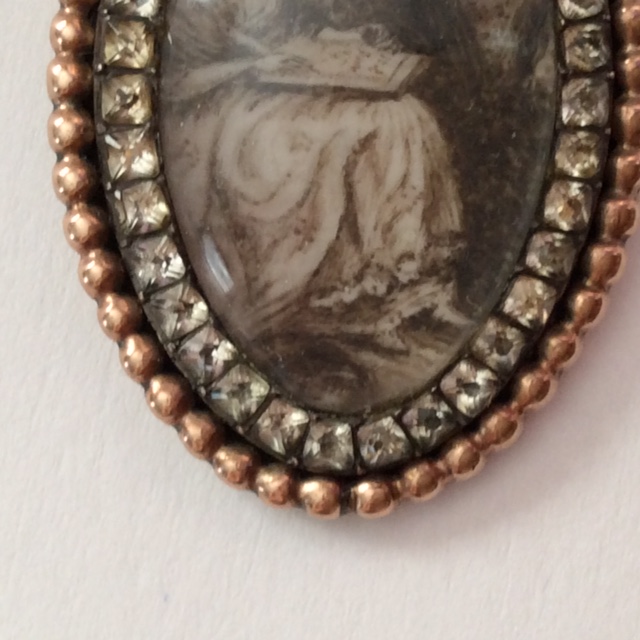
Post 1760, the Neoclassical movement had crept into the previously fashionable Rococo style of costume fabrics. Elaborate Rococo floral motifs moved to simple stripes or smaller motifs. Side hoops were discarded and lighter silks and cotton was introduced, with much influence being from the aristocracy. Marie Antoinette was painted in La reine en gaulle, by Elisabeth Vigée-Lebrun, 1783, introducing a new style that reflected the peasantry, showing a muslin chemise, straw hat and belt at the waist.
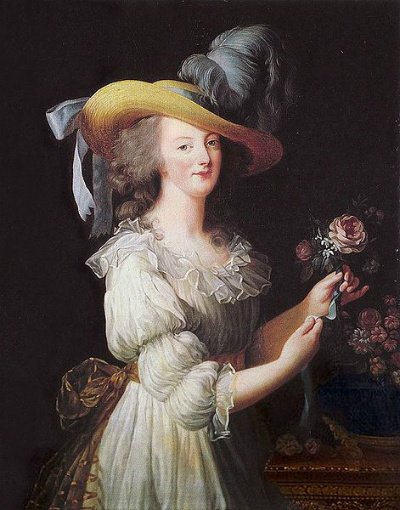
The 18th century welcomed in greater convention for mourning fashion and began to see the rise of the mourning industry. This became so much so that mourning dress was becoming desirable and the difference between mourning and non mourning dress was narrowing. Much of the fashion in this century was dictated by the fabric rather than the cut, and the silk industries in France and England held major influence on mourning wear because of this.
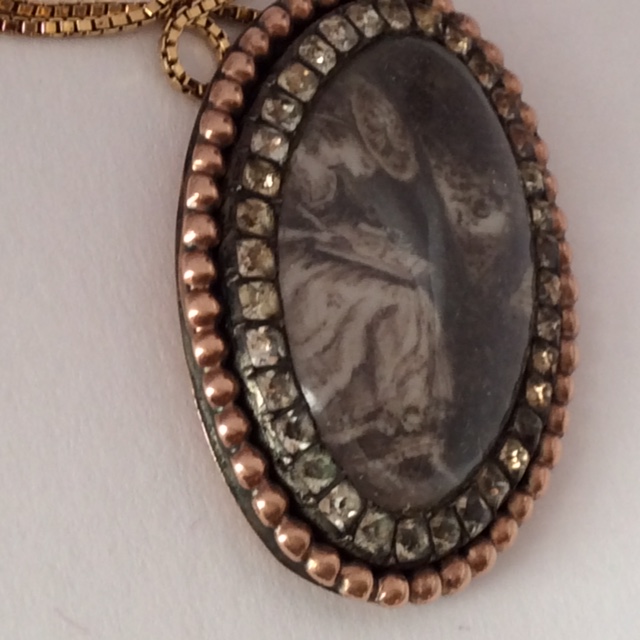
Due to the nature of the subject, this is a pendant that still holds emotional weight even today. Many sentimental and mourning jewels from the Neoclassical period have been, and still do, become appropriated by people who want to use them again as a way to honour memory and love for another. As such, many jewels that have been passed down are often marriages of other jewels, or the original inscription has worn down. This jewel represents fashion, love, knowledge and serenity, all values that are basic to the human condition.
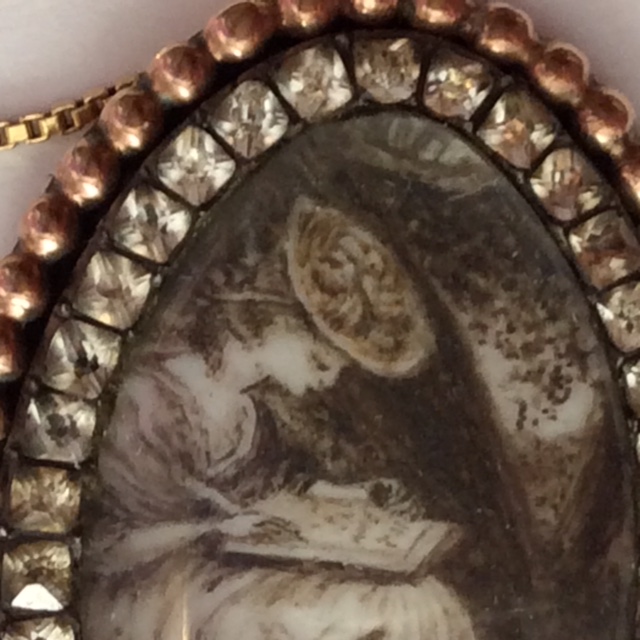
In the setting of the jewel, the pendant exterior seems to be a later, 19th century addition. As with many brooches and pins of the 18th and 19th centuries, many were adapted to become other jewels, most notably rings, as the conversion is a simple one and the jewels themselves are striking in their allegorical settings. The piece retains the paste border, which helps give the design an extra eye-catching feature, as the use of both Neoclassical symbolism and gems were highly popular at the turn of the 19th century. Gems would eventually replace the Neoclassical designs, due to greater accessibility and lower cost. Sentimentality in the meaning of gems and their ‘magical properties’ during this time formed the basis of what modern interpretations of gems are.




